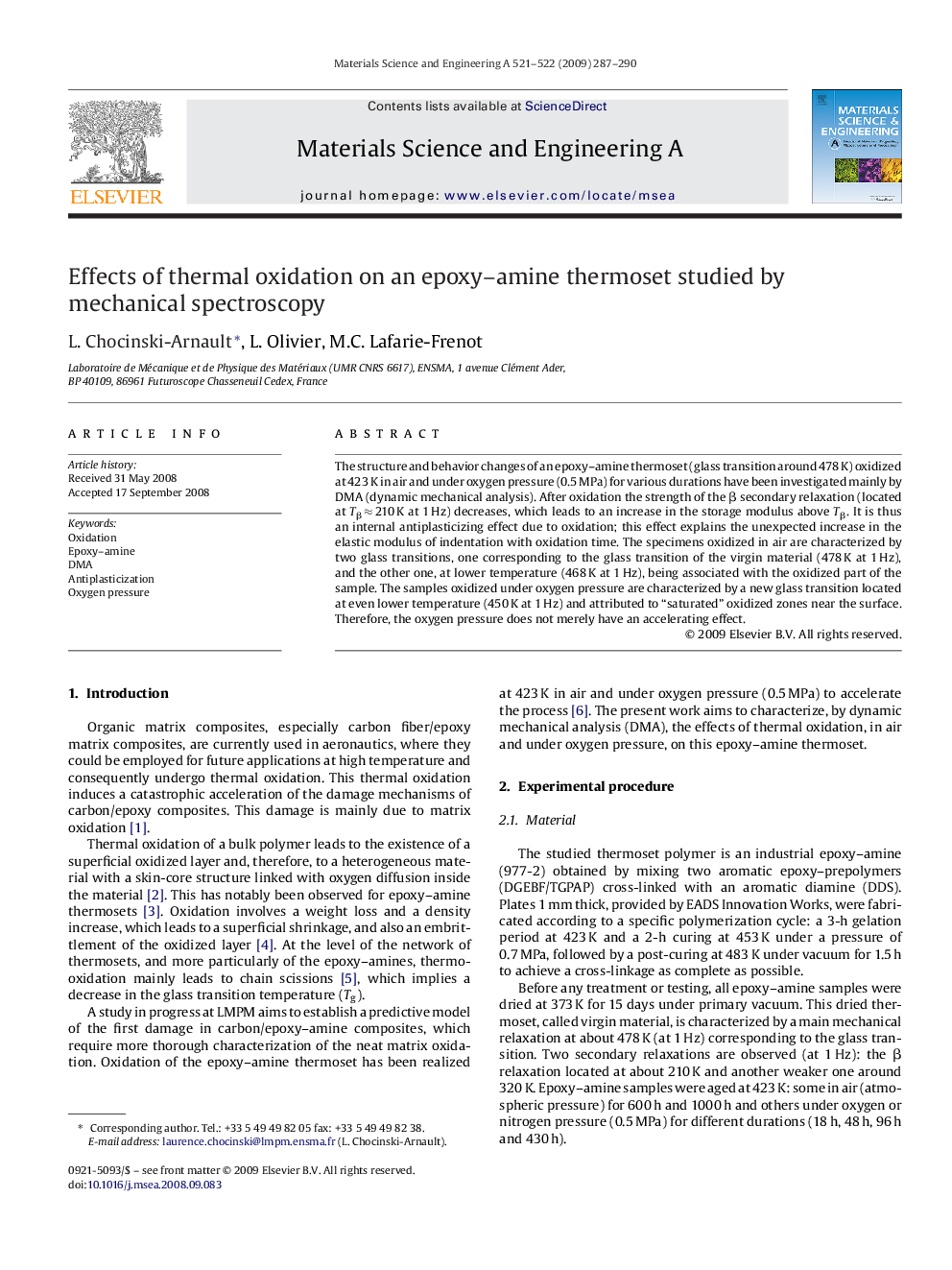| Article ID | Journal | Published Year | Pages | File Type |
|---|---|---|---|---|
| 1580098 | Materials Science and Engineering: A | 2009 | 4 Pages |
The structure and behavior changes of an epoxy–amine thermoset (glass transition around 478 K) oxidized at 423 K in air and under oxygen pressure (0.5 MPa) for various durations have been investigated mainly by DMA (dynamic mechanical analysis). After oxidation the strength of the β secondary relaxation (located at Tβ ≈ 210 K at 1 Hz) decreases, which leads to an increase in the storage modulus above Tβ. It is thus an internal antiplasticizing effect due to oxidation; this effect explains the unexpected increase in the elastic modulus of indentation with oxidation time. The specimens oxidized in air are characterized by two glass transitions, one corresponding to the glass transition of the virgin material (478 K at 1 Hz), and the other one, at lower temperature (468 K at 1 Hz), being associated with the oxidized part of the sample. The samples oxidized under oxygen pressure are characterized by a new glass transition located at even lower temperature (450 K at 1 Hz) and attributed to “saturated” oxidized zones near the surface. Therefore, the oxygen pressure does not merely have an accelerating effect.
